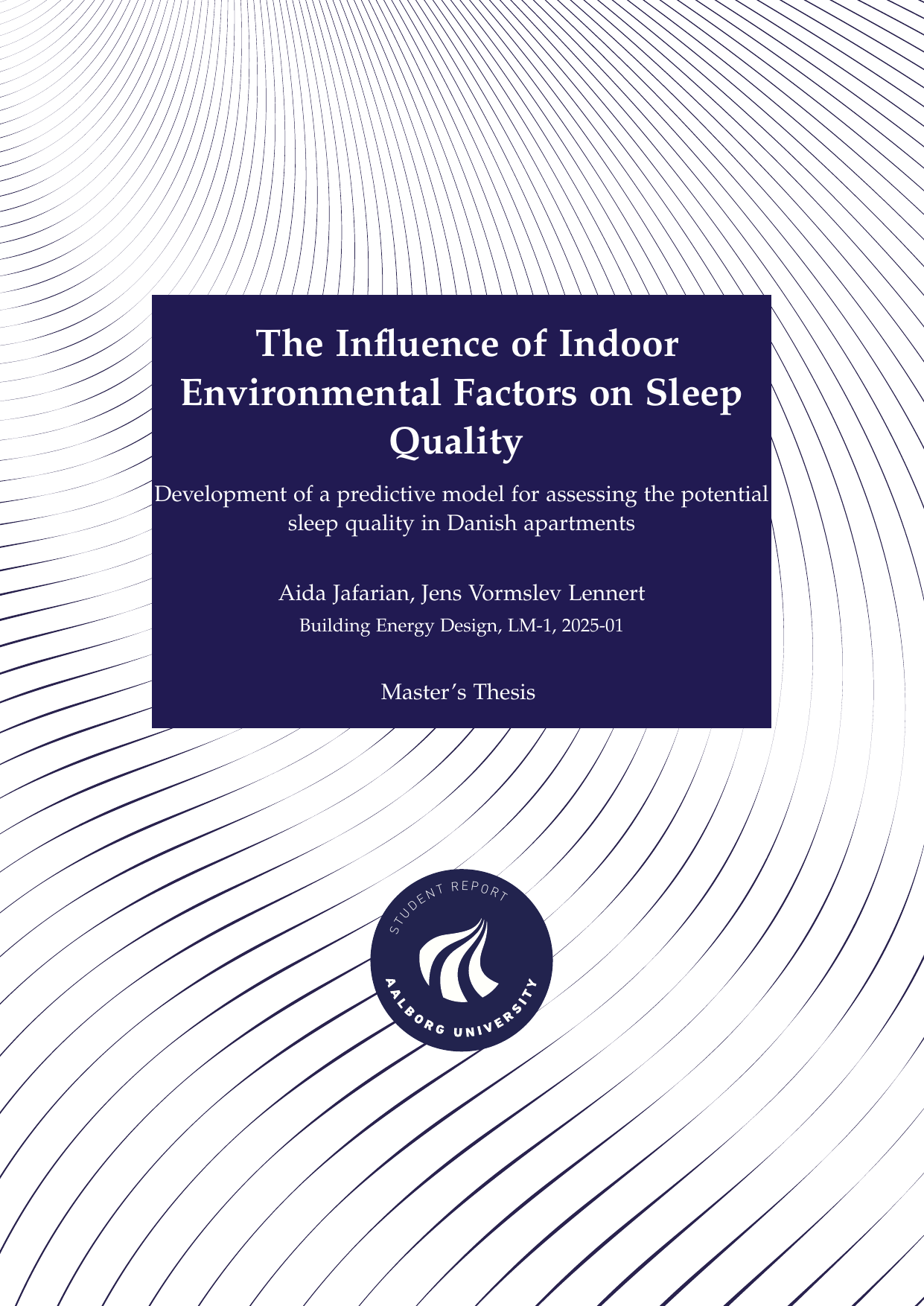
The Influence of Indoor Environmental Factors on Sleep Quality: Development of a predictive model for assessing the potential sleep quality in Danish Dwellings
Authors
Term
4. Term
Education
Publication year
2025
Submitted on
2025-01-08
Pages
69
Abstract
This study examines the impact of Indoor Environmental Quality (IEQ) parameters—thermal comfort, indoor air quality (IAQ), acoustic comfort, and visual comfort—on sleep quality in residential buildings. IAQ (r = 0.88) and thermal comfort (r = 0.78) emerge as the most influential factors, while acoustic and visual comfort were secondary. The research introduces the Sleep Quality Assessment Tool, an innova- tive Excel-based model that integrates stricter thresholds for sleep-supportive conditions, including CO2 ≤ 750 ppm, noise levels ≤ 20 dB, and thermal ranges of 18–24◦C. These thresholds surpass existing standards like BR18 and WELL. A comparison reveals gaps in current regulations, particularly for night- time conditions and dynamic envi- ronmental controls. Recommenda- tions include enhanced thermal regu- lation, low-noise ventilation systems, and circadian-aligned lighting. Fu- ture work should validate this study through field studies and explore real- time monitoring technologies. This thesis uniquely contributes by de- veloping the first tool for assessing and improving residential sleep qual- ity, offering actionable insights for pol- icymakers and designers.
This study examines the impact of Indoor Environmental Quality (IEQ) parameters—thermal comfort, indoor air quality (IAQ), acoustic comfort, and visual comfort—on sleep quality in residential buildings. IAQ (r = 0.88) and thermal comfort (r = 0.78) emerge as the most influential factors, while acoustic and visual comfort were secondary. The research introduces the Sleep Quality Assessment Tool, an innova- tive Excel-based model that integrates stricter thresholds for sleep-supportive conditions, including CO2 ≤ 750 ppm, noise levels ≤ 20 dB, and thermal ranges of 18–24◦C. These thresholds surpass existing standards like BR18 and WELL. A comparison reveals gaps in current regulations, particularly for night- time conditions and dynamic envi- ronmental controls. Recommenda- tions include enhanced thermal regu- lation, low-noise ventilation systems, and circadian-aligned lighting. Fu- ture work should validate this study through field studies and explore real- time monitoring technologies. This thesis uniquely contributes by de- veloping the first tool for assessing and improving residential sleep qual- ity, offering actionable insights for pol- icymakers and designers.
Keywords
Velbehag ; Søvn ; Soveværelse
Documents
